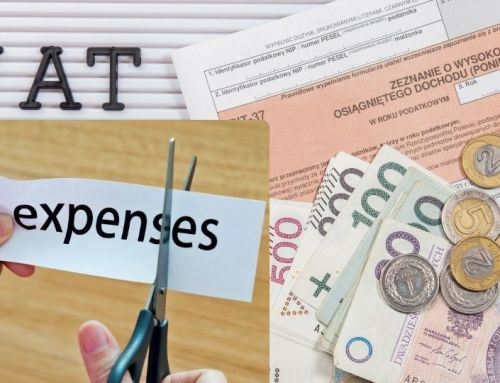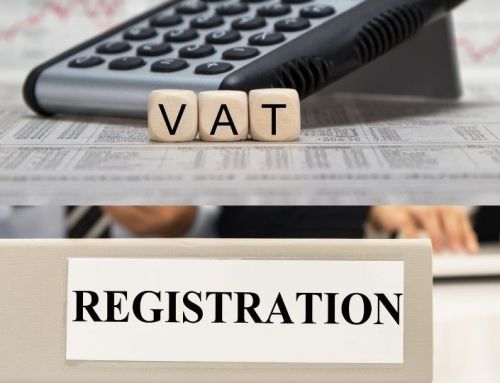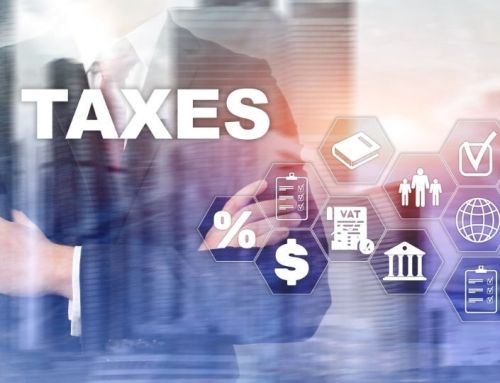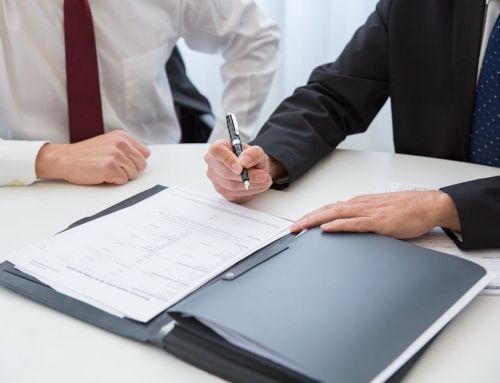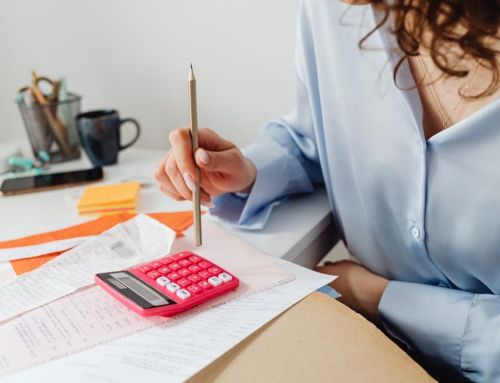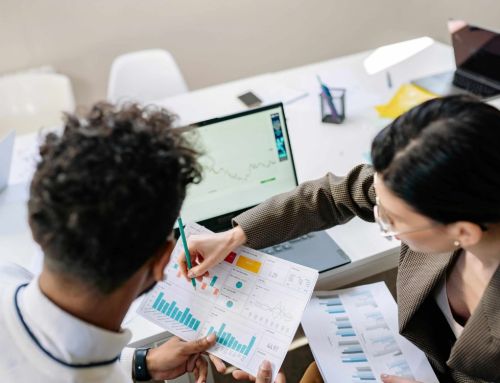The VAT reverse charge is a VAT accounting method used primarily to combat fraud and avoid tax losses in certain sectors. Instead of the supplier charging VAT and remitting it to HMRC, the obligation to report and pay the VAT shifts to the buyer.
This reverse system has been increasingly adopted in sectors that are prone to VAT fraud, including construction, mobile phones, and wholesale telecommunications. It also applies in many cross-border transactions between VAT-registered businesses.
Here’s how it works in simple terms: under the reverse charge, the supplier does not charge VAT on the invoice. Instead, the buyer records both the input and output VAT on their VAT return. This has no cash flow effect for fully taxable businesses but ensures that the VAT liability is declared correctly and cannot be pocketed fraudulently.
The VAT reverse charge mechanism plays an important role in securing VAT compliance and aligning with international best practices, especially in cross-border services. In the UK, HMRC has detailed rules for when and how the reverse charge must be applied, and failing to follow them can lead to costly penalties.
Whether you’re a supplier, buyer, accountant or VAT-registered business owner, understanding the VAT reverse charge UK rules is essential for staying compliant and avoiding avoidable liabilities.
When Does the VAT Reverse Charge Apply?
The VAT reverse charge does not apply to all transactions. It is used in specific scenarios outlined by HMRC, mainly to tackle VAT fraud and reduce risks in high-value or high-risk sectors. To apply the reverse charge, certain criteria must be met regarding the type of supply, the status of both parties, and the nature of the transaction.
Key Conditions for VAT Reverse Charge
The reverse charge applies only when all the following conditions are met:
- The customer has UK VAT registration.
- The supplier is also VAT-registered in the UK or another country.
- The transaction involves specific goods or services covered by reverse charge rules.
- The transaction is B2B (business-to-business).
- The customer is required to account for the VAT instead of the supplier.
These conditions mean that reverse charge VAT is usually not relevant to sales to non-VAT registered individuals or consumers.
Common Sectors Where the VAT Reverse Charge Applies
The VAT reverse charge UK rules apply primarily in the following sectors:
- Construction (as per the Domestic Reverse Charge for Building and Construction Services)
- Mobile phones and computer chips
- Telecommunication services (such as wholesale bandwidth)
- Wholesale energy
- Gas and electricity certificates trading
- Cross-border services (when the place of supply is the UK but the supplier is overseas)
Let’s take a closer look at a few of these.
1. Construction Industry Scheme (CIS) and Reverse Charge
The Domestic Reverse Charge for construction services took effect from 1 March 2021. Under this regime, if a subcontractor provides services to a contractor and both are VAT-registered under the CIS, the contractor — not the subcontractor — must account for the VAT.
This affects:
- Labour and materials supplied together
- Standard and reduced rate supplies
- Invoice wording (must include a statement like: “Reverse charge: customer to account for VAT to HMRC”)
2. Cross-Border Services
When a UK business receives services from a business located outside the UK, the reverse charge usually applies. This ensures that UK VAT is still accounted for, even if the supplier is not based in the UK.
3. Wholesale Telecoms and Energy
These are sectors vulnerable to missing trader intra-community (MTIC) fraud. The VAT reverse charge is used to prevent suppliers from collecting VAT and then disappearing before paying HMRC.
How the VAT Reverse Charge Mechanism Works (Step-by-Step)
Understanding how the VAT reverse charge mechanism operates is key for both suppliers and customers. While the concept may seem complex at first, the actual process follows a clear and logical flow once the qualifying criteria are met.
Here’s a practical, step-by-step breakdown of how the VAT reverse charge works:
Step 1: Confirm VAT Status of Both Parties
Before applying the VAT reverse charge, it is crucial to verify that:
- The customer is VAT-registered in the UK.
- The supplier is also VAT-registered, either in the UK (for domestic reverse charge) or overseas (for cross-border transactions).
HMRC provides a VAT number validation tool for this purpose (known as VIES for EU suppliers).
Step 2: Determine If the Supply Falls Under Reverse Charge Rules
Not all supplies qualify. You must determine if the goods or services are covered under HMRC’s VAT reverse charge rules. This includes:
- Construction services under the CIS scheme
- Mobile phone or computer chip sales
- Wholesale energy and telecoms
- Certain cross-border services
If the supply does not fall under these categories, standard VAT rules apply instead.
Step 3: Invoice Without VAT
If the transaction qualifies, the supplier must issue a VAT invoice showing:
- The net amount of the supply
- No VAT charged
- A note stating:
“Reverse charge: Customer to account for VAT to HMRC.”
The invoice must still include the VAT rate that would normally apply, for the customer to calculate the reverse charge.
Step 4: Customer Accounts for VAT on Their VAT Return
The customer receiving the supply must:
- Declare the output VAT (as if they charged themselves VAT)
- Reclaim the input VAT (if they are fully taxable and entitled to recover it)
This creates a neutral cash flow effect — output VAT is declared and input VAT is claimed simultaneously.
Step 5: Record the Transaction Correctly in VAT Returns
Here’s how the VAT reverse charge appears in the VAT returns:
- Supplier’s VAT Return:
- Net sale recorded in Box 6 (total value of sales)
- No VAT declared in Box 1 (output tax)
- Customer’s VAT Return:
- VAT calculated and declared in Box 1 (output tax)
- Same VAT reclaimed in Box 4 (input tax)
- Net purchase recorded in Box 7 (purchases excluding VAT)
Example: Reverse Charge in Practice
Let’s say:
- A VAT-registered subcontractor invoices £10,000 for standard-rated building work.
- The contractor (also VAT-registered) is the customer.
Supplier Invoice:
Supply of building services: £10,000
VAT: Reverse charge applies (no VAT charged)
Total: £10,000
Note: Reverse charge – customer to account for VAT to HMRC.
Customer VAT Return:
- Box 1: £2,000 (20% of £10,000)
- Box 4: £2,000 (reclaimed as input VAT)
- Box 7: £10,000 (net value of the purchase)
VAT Reverse Charge Invoicing Requirements
Creating accurate VAT invoices under the VAT reverse charge mechanism is critical. HMRC has specific invoicing rules to ensure the customer is aware of their obligation to account for the VAT, and to support accurate VAT reporting on both ends.
Unlike standard VAT invoices, reverse charge invoices must not include VAT in the total amount charged. Instead, they must provide clear wording that transfers the VAT responsibility to the customer.
Mandatory Elements of a VAT Reverse Charge Invoice
To comply with UK rules, a reverse charge invoice must include:
- Supplier and customer’s name, address and VAT registration numbers
- Invoice number and date of supply
- Description of the goods or services provided
- Net amount payable, exclusive of VAT
- The rate of VAT that would apply (e.g. 20%), but no VAT charged
- A clear reference that the reverse charge applies
Recommended Wording
HMRC accepts various phrasings, but the invoice must explicitly state that the reverse charge VAT applies. Use one of the following approved wordings:
“Reverse charge: Customer to pay the VAT to HMRC.”
Or:
“VAT reverse charge applies. Customer is liable to account for VAT.”
This signals to the buyer that they must both declare and, where eligible, recover the VAT in their VAT return.
Common Invoicing Mistakes to Avoid
- Charging VAT incorrectly – Suppliers must not add VAT to reverse charge invoices.
- Failing to include reverse charge statement – Omitting the required wording can lead to non-compliance.
- Using the wrong VAT rate or misclassifying the supply – This leads to reporting errors and possible HMRC penalties.
- Not verifying the customer’s VAT number – Especially important for cross-border and B2B supplies.
Keeping invoicing compliant ensures both supplier and customer meet their legal obligations under VAT reverse charge UK legislation.
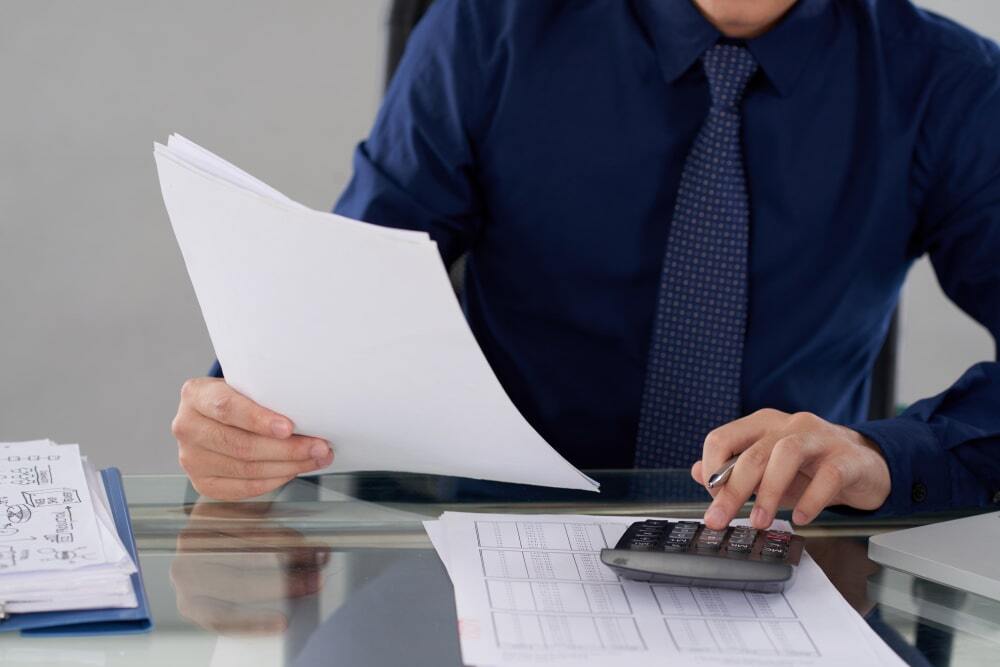
Industries and Transactions Covered by VAT Reverse Charge
The VAT reverse charge UK rules are not universal. They are targeted to apply where there is a high risk of VAT fraud or evasion, or where cross-border complexity makes it impractical for suppliers to charge VAT in the traditional way.
Let’s examine the key industries and transaction types where the reverse charge is either mandatory or frequently applied.
1. Construction Industry
The Domestic Reverse Charge for Building and Construction Services came into force on 1 March 2021. It applies to VAT-registered businesses that supply or receive services reported under the Construction Industry Scheme (CIS).
Applies To:
- Services like site preparation, alterations, demolition, installation of heating, lighting, power, water systems
- Labour and materials provided together
- Services between contractors and subcontractors
Does Not Apply To:
- End-users (such as property owners)
- Services supplied to non-VAT-registered businesses
Example:
A VAT-registered subcontractor invoices a contractor for £5,000 of labour and materials. Instead of charging VAT, the subcontractor notes that the reverse charge applies. The contractor accounts for both output and input VAT on their return.
2. Telecommunications
Wholesale telecom services, including bandwidth and mobile call routing, fall under the reverse charge VAT mechanism. These are particularly prone to VAT carousel fraud (also known as MTIC fraud).
Common Examples:
- B2B provision of wholesale bandwidth
- Interconnection services between telecom operators
Important Note: Retail telecom services provided to end-users are not subject to the reverse charge.
3. Mobile Phones and Computer Chips
These goods were among the first to be targeted by reverse charge rules in the UK, due to widespread fraud in the 2000s. The reverse charge applies where the total value of the supply exceeds £5,000 (excluding VAT).
Key Requirements:
- Both buyer and seller must be VAT-registered
- Applies only to B2B domestic supplies
- Seller must not charge VAT and must include the correct reverse charge statement on the invoice
4. Wholesale Energy and Emissions Trading
The sale of wholesale gas, electricity, and carbon emission allowances can fall under the reverse charge where the transaction is between taxable persons and subject to large-scale trading.
Applicable Areas:
- Renewable energy certificates (RECs)
- Carbon credits
- Large wholesale energy contracts between registered businesses
These are niche areas, but vital for companies in the energy sector to understand.
5. Cross-Border B2B Services
This is one of the most widely applied areas of the VAT reverse charge. When UK businesses purchase services from abroad (e.g. from the EU, US, India), the place of supply is typically considered to be the UK, meaning UK VAT is due.
Common Scenarios:
- Software licences
- Marketing services
- Consultancy
- Cloud-based services
- Digital advertising platforms
In these cases, the UK customer must apply the reverse charge and declare both input and output VAT.
6. Miscellaneous High-Risk Sectors
HMRC occasionally extends reverse charge treatment to sectors temporarily — or permanently — if significant fraud is detected. Businesses operating in scrap metal, precious metals, or second-hand electronics should stay alert to evolving guidance.
Understanding which transactions qualify for VAT reverse charge helps prevent accidental misapplication and reduces exposure to fines or VAT assessments.
Common VAT Reverse Charge Errors and How to Avoid Them
Despite clear guidance from HMRC, the VAT reverse charge mechanism is often misapplied. Whether it’s through misidentifying transactions, incorrect invoicing, or poor record keeping, the risks are real — including VAT underpayments, overclaims, or penalties during a compliance check.
Here are the most common mistakes and how to steer clear of them.
1. Charging VAT When Reverse Charge Should Apply
The mistake: A supplier charges VAT on an invoice where the reverse charge VAT rules should apply — for example, in a construction transaction between two CIS-registered businesses.
The risk: The supplier may incorrectly pay VAT to HMRC, while the customer also accounts for the VAT via reverse charge — resulting in duplicated VAT and incorrect returns.
How to avoid it:
- Always check whether the customer is VAT-registered and the supply is within scope
- Maintain a checklist for contracts that might fall under domestic reverse charge or cross-border reverse charge conditions
- Use invoice templates that clearly support reverse charge requirements
2. Failing to Include the Reverse Charge Statement on Invoices
The mistake: A supplier omits the mandatory wording like “VAT reverse charge applies – customer to account for VAT”.
The risk: This could invalidate the invoice, cause the customer to misreport VAT, and raise red flags in HMRC audits.
How to avoid it:
- Use automated accounting software that includes reverse charge options
- Add standard phrases to your invoice templates
- Train your billing team to understand when and how to apply the reverse charge
3. Applying the Reverse Charge to End-Users
The mistake: Applying the VAT reverse charge to a business or consumer that is not VAT-registered or is classified as the final user (e.g., a property developer using a contractor for private development).
The risk: HMRC may assess underpaid VAT, disallow input VAT reclaims, or impose interest and penalties.
How to avoid it:
- Always verify the customer’s VAT status (UK VAT registration number)
- In the construction sector, obtain a written confirmation from customers on whether they are an end-user
4. Failing to Account for Reverse Charge VAT on the Customer Side
The mistake: A customer receives a reverse charge invoice but fails to include the output and input VAT in their VAT return.
The risk: Underreporting output VAT may result in penalties or assessments from HMRC.
How to avoid it:
- Include a review process to capture reverse charge invoices in VAT returns
- Configure accounting systems (e.g. Sage, Xero, QuickBooks) to handle reverse charge entries automatically
5. Incorrectly Treating Cross-Border Services
The mistake: Treating cross-border B2B services (e.g. cloud software, online advertising) as exempt or ignoring them altogether.
The risk: This leads to under-declared VAT and compliance exposure.
How to avoid it:
- Know the “place of supply” rules for services
- Assume reverse charge applies to most B2B services received from abroad, unless clearly exempt
6. Poor Record Keeping and Documentation
The mistake: Not keeping proper evidence that the VAT reverse charge was correctly applied, including VAT registration numbers and invoice wording.
The risk: Difficulty proving compliance during an HMRC audit.
How to avoid it:
- Keep digital records of reverse charge transactions
- Validate and archive customer VAT details
- Retain correspondence, end-user declarations, and CIS registration proof where relevant
Taking the time to build a robust reverse charge compliance process will save your business time, money, and headaches. Errors in this area often compound over multiple VAT periods, so accuracy from the start is essential.
Frequently Asked Questions
What is the VAT reverse charge?
The VAT reverse charge is a UK VAT rule that shifts the responsibility for reporting and paying VAT from the supplier to the customer. It is mainly used in sectors where there is a high risk of VAT fraud or when dealing with cross-border business-to-business services. The customer declares both output and input VAT on their VAT return, rather than the supplier charging it.
When should the VAT reverse charge be applied?
The VAT reverse charge should be applied when:
- Both supplier and customer are VAT-registered
- The supply is within a sector covered by reverse charge rules (e.g. construction, telecoms, energy)
- The customer is not an end-user
- The transaction is B2B and not exempt from VAT
Always verify the nature of the supply and both parties’ VAT status before applying the VAT reverse charge.
Does the VAT reverse charge apply to all services?
No, the VAT reverse charge applies only to specific services and goods as defined by HMRC. In the UK, it commonly applies to construction services (under the Domestic Reverse Charge), cross-border B2B services, mobile phones, wholesale telecoms, and wholesale energy supplies. Retail or consumer transactions are not subject to the reverse charge VAT mechanism.
How do I show the VAT reverse charge on an invoice?
To comply with VAT reverse charge rules, your invoice must:
- Show the net amount only (no VAT added)
- Indicate the VAT percentage according to the VAT flat rate scheme that would normally apply (e.g. 20%)
- Include a reverse charge statement, such as:
“Reverse charge: VAT to be accounted for by the customer.”
This makes clear that the customer, not the supplier, is responsible for reporting the VAT to HMRC.
Who is responsible for accounting for VAT under the reverse charge?
Under the VAT reverse charge, the customer (i.e. the recipient of the supply) is responsible for both declaring the output VAT and reclaiming the input VAT (if entitled). This is done via their VAT return, and applies only if they are VAT-registered.
Is the VAT reverse charge optional?
No, the VAT reverse charge is a legal requirement in the UK when conditions are met. If you qualify under the criteria laid out by HMRC (e.g. sector-specific rules or cross-border B2B transactions), you must apply the reverse charge. Failure to do so may result in VAT misreporting and penalties.
Does the VAT reverse charge affect my cash flow?
The VAT reverse charge typically has no cash flow effect for fully taxable businesses because the output VAT declared and input VAT reclaimed cancel each other out. However, it can affect businesses that are partially exempt or not entitled to full VAT recovery.
How do I report reverse charge transactions on my VAT return?
In a reverse charge scenario:
- Supplier:
- Enters the net sale in Box 6 of the VAT return
- Does not report output VAT in Box 1
- Customer:
- Reports output VAT in Box 1
- Reports input VAT (if recoverable) in Box 4
- Enters the net purchase in Box 7
This is how VAT reverse charge flows through the VAT accounting system.
What happens if I make a mistake with VAT reverse charge?
Mistakes in applying the VAT reverse charge — such as charging VAT when you shouldn’t, or forgetting to account for it as a customer — can lead to:
- Incorrect VAT returns
- VAT underpayments or overclaims
- HMRC penalties or assessments
Correct errors as soon as they are discovered and consult an accountant if needed.
Can I use VAT reverse charge for non-UK transactions?
Yes, but only in B2B cross-border service transactions where the place of supply is the UK. For goods, the reverse charge mechanism typically only applies in domestic contexts (e.g. construction or telecoms in the UK). Always check the place of supply rules and HMRC’s guidance on services received from abroad.
How does the VAT reverse charge help prevent fraud?
The VAT reverse charge removes the opportunity for a supplier to charge VAT and then disappear without paying it to HMRC — a common tactic in “missing trader” fraud schemes. By shifting VAT accounting to the customer, it makes fraud more difficult and improves VAT compliance across risky industries.
Need Help Navigating VAT Reverse Charge Rules?
The VAT reverse charge can be a compliance minefield if applied incorrectly — but with the right support, you can stay on top of your VAT responsibilities and avoid costly mistakes.
At The Taxcom, whether you’re in construction, telecoms, or international services — we’ve got you covered.
Contact us today.
Table of Content

Our Content Writing Team boasts a proven track record of crafting engaging and impactful content that drives success and achieves results.



